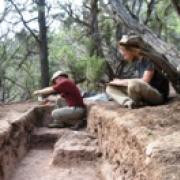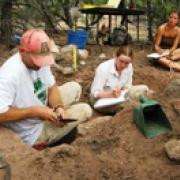Excavating the Past in Range Creek Canyon

Documentation

Excavation is uncovering or removing something from the ground. Excavation is a destructive process, but it is different from other destructive processes (erosion, vandalism, mechanized earthmoving) if archaeologists maintain control and document the process through extensive note taking, mapping, and photography. It is especially important to document the location (provenience) of artifacts and features. By establishing vertical and horizontal control scientists are able to determine which artifacts and features are related to one another and which are not. This is critical when we consider that humans tend to locate themselves in the same places through time, depositing layers of archaeological material in the same place. One example might be that different groups of people from different cultural traditions decide to use the same area because of a spring or seep. With each occupation, different artifacts and features are added to the archaeological record of a particular place. By removing the deposited layers one at a time, archaeologists can reconstruct the sequence of events.

Written documentation is key to this process. University of Utah field school students learn a detailed and repetitive style of note keeping called the Feature System. Once a site is taken apart systematically by the excavation process, only the information captured in the notes remains. For this reason, great care and attention to detail is absolutely essential. Before the first shovel of dirt hits the screens, many hours of planning and preparation are required to ensure that the process will run smoothly and, more importantly, that recovered data are complete and accurate. Frequently, excavation stops so that notes can be updated and photos taken. In addition to years of training, archaeologists must acquire permits from the state and land owners propr to conducting excavation.